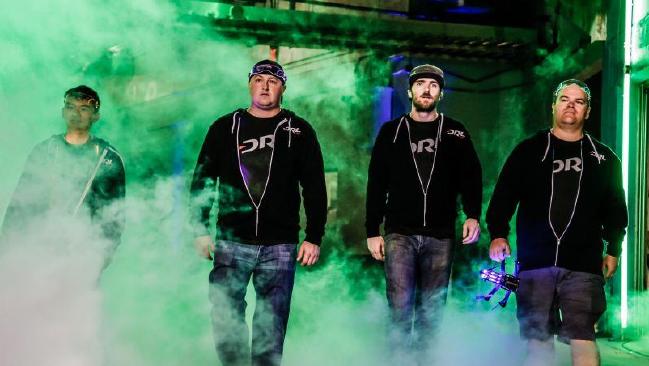
INSIDE an empty Miami Dolphins stadium, a series of drones narrowly avoid obstacles as they race at speeds up to 112km/h.
Unfortunately, not every drone is able to finish the race with one device crashing fiercely into a bright green neon sign.
This is something viewers will regularly see following the announcement of an inaugural racing season for the Drone Racing League — a competition its creators hope can rival Formula 1 and NASCAR.
DRL founder Nick Horbaczewski said he believes drone racing is the sport of the future.
“DRL is the premier drone racing league, we put on a global circuit of races, with the best drivers, in the most interesting locations, creating compelling sports media and sharing it with the world,” he announced, in a promotional video.
“The pilots have goggles they wear, they get a video feed off the drone and it lets them see what the drone sees as if they are sitting in the cockpit and then they compete in these exciting high speed races.”
Winners are determined by points obtained during a number of heats, which see racers trying to navigate through a series of obstacles in the fastest possible time.
Each race is held in different closed-door locations with an abandoned mall in Los Angeles set to follow the competition’s debut at the Dolphins’ stadium.
Director of product Ryan Gury said the courses were not only aesthetically pleasing, but they were a world first for drone racing.
“Our courses are really different from other courses. Usually racing courses are left to right. “Ours have 3D elements in them, so we get to go left, right up and down,” he said.
As the video feed between the drone and goggles appears grainy, the sport has opted away from live broadcasting.
Instead, HD cameras installed on the drones are used to capture footage, which producers then cut into captivating and visually striking videos.
However, Mr Horbaczewski said he would like to see a live audience added to the events by late 2016 or early 2017.
“Our focus right now is on putting on great racing events and creating great media, but it’s incredibly compelling live,” he toldFortune.
“When we think about drone racing, it’s a real-life video game experience that blends the virtual and real together.
“Our goal is to expose as many people to Drone Racing League as possible, and 360-degree VR and video games are part of that plan.”

It’s the same as car racing. Who doesn’t love to see a crash?
With market research firm Frost & Sullivan predicting hobby drones will become a $4.4 billion market by 2020, Mr Horbaczewski believes his concept will be a huge success.
“When you see it now as a hobby with people building drones and going out into fields, we thought it could be something entertaining and interesting to people who love drones,” he said.
It would appear as if venture capitalists agree.
In August last year, Quartzreported the owner of the Miami Dolphins, Stephen Ross, used his investment firm RSE Ventures to take a $1 million stake in the league.
This has since been supplemented by a number of other investors including Hearst Ventures — a company that owns magazines Esquire and Car & Driver, and also has a stake in ESPN.

